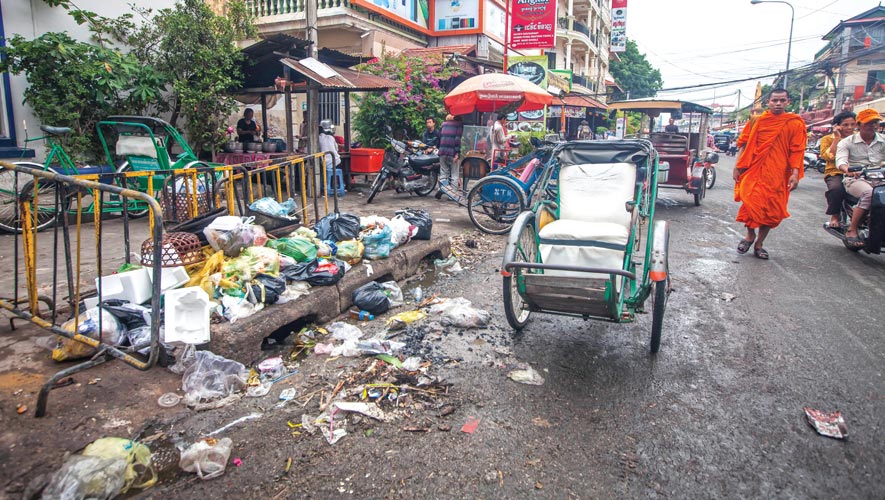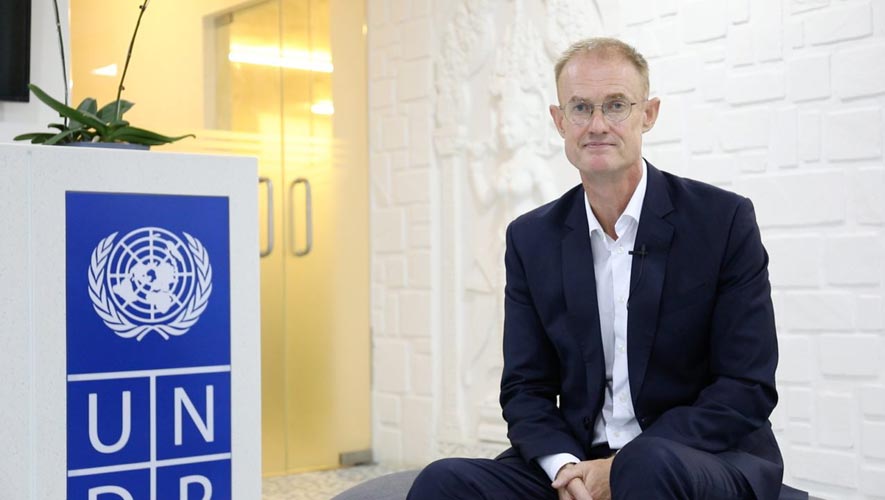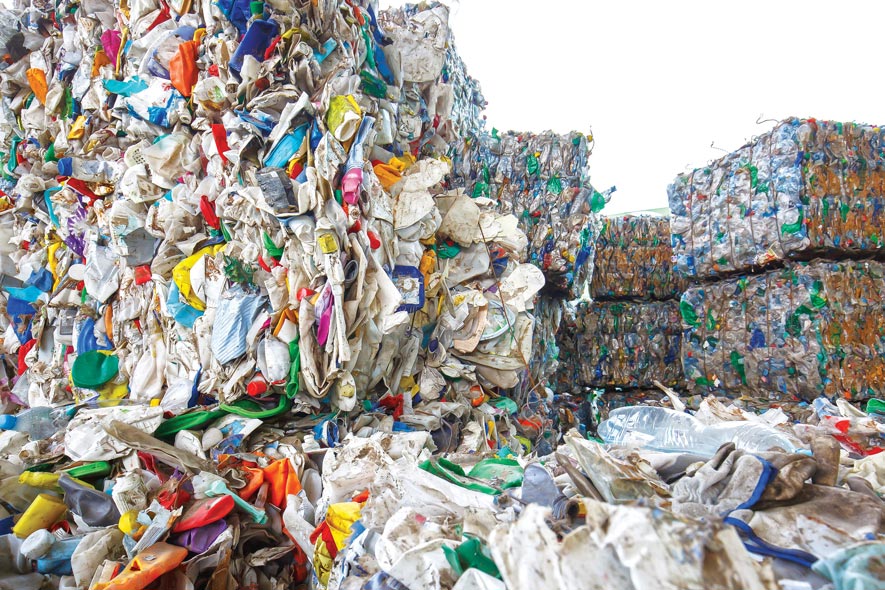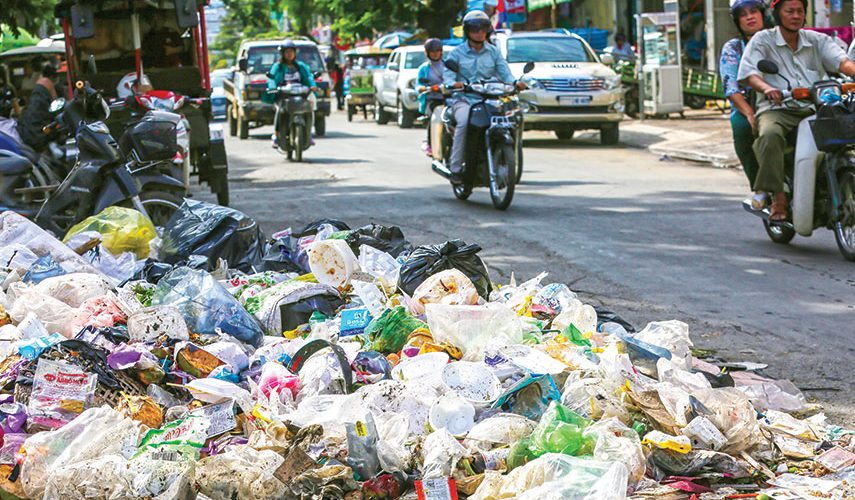Energy policies required to deal with rising waste
For the latest Cambodian Business news, visit Khmer Times Business
Cambodia’s rising population both in rural and urban areas, particularly Phnom Penh, has led to growing concern over ever-increasing waste and demands for an urgent policy to tackle it.
The capital had the highest population, accounting for 2,129,371 (13.9 per cent), among a total population of 15,288,489 as of March 3, 2019, according to a preliminary census result.
For the last five years, Phnom Penh alone produced waste of more than 2,800 tonnes per day. It has surged year-on-year and been found to kill wildlife. Marine life forms that feed on jellyfish are particularly prone to plastic poisoning.
The Ministry of Economy and Finance, led by Deputy Prime Minister and Minister of Economy and Finance Aun Pornmoniroth, together with relevant stakeholders, were prompted to hold a meeting to study the possibility of using waste as source to generate energy.

The government has agreed some measures and is preparing a national policy on managing and processing waste materials.
It plans to reform the waste management system and prepare a campaign to raise public awareness of the problems trash causes.
Air pollutants health risk
Waste-to-Energy (WTE) has been widely used in developed countries including in Europe, Singapore and Japan. In Sweden, for example, 35 per cent of waste is used to generate heat and electricity for the country.
In Asia, some countries such as Sri Lanka use cement kilns to convert waste into energy, according to the United Nations Development Programme (UNDP) in Cambodia.
UNDP says that with waste-to-energy systems, rubbish disposed at landfills can be reduced, greenhouse gas emissions can be cut and the need for other less clean sources of energy such as coal and firewood can be minimised.
However, the power plants using waste require high-quality technology and investment in cleaning the fumes to ensure that people living around the plant are not affected by harmful air pollutants. So it is important to have the right technology with skilled personnel in place to eliminate harmful substances in the incineration process, says Nick Beresford, Resident Representative at UNDP Cambodia.

Resident Representative, UNDP Cambodia
“Along with rapid economic growth and a growing population, there has been an increase in industrial and municipal waste in Cambodia.
If the WTE model is applied for waste management in Cambodia, instead of being disposed of, waste would be treated as a new resource adding new economic value to the economy,” Beresford says.
Climate change effect
The Kingdom’s demand for energy consumption in the peak hour now reaches more than 2,000 megawatts (MW), a 20-fold increase from more than 100 MW in 2000, according to Electricite Du Cambodge (EDC).
It says currently 50 per cent of the energy comes from hydroelectric power dams, 30 per cent from coal power plant and less than 5 per cent from other fuel. The remainder is from imported fuel and electricity including solar power.
“To meet the rising demand rapidly, we have to use mixed energy, but it is still not enough,” says EDC’s Director-General Keo Rattanak. “By December 2020, the use of energy from a solar farm in the national grid will reach 15 per cent,” Keo adds.
During February to May this year, the Kingdom experienced a shortage of 400 megawatts of electricity because of a lack of water to power electric dams. Climate change has been blamed for the drought.
Electricite du Cambodge in March also issued a statement saying that because of power shortages, it has reduced the supply of electricity in the Kingdom during the day to ensure a bigger supply at night.
Less of an eyesore
Victor Jona, director-general of Cambodia’s Ministry of Mines and Energy, says there is a huge benefit if the waste is used to generate energy because it adds a new source. It increases energy security and cleans the country up, making areas less of an eyesore.
Jona says this also reduces more dumped waste and reduces the amount of toxic substances that leach into groundwater or end up in rivers, lakes and the sea.
So far, however, there is no concrete plan to process the waste into energy and on how much investment would be needed. There is also no timetable because first a comprehensive study is required. However, Jona says that at least a good start has been made towards these goals.
“I think it is a good idea to process waste to energy because it will be boosting the ability of the EDC to supply more power to the national grid and also contribute to clean the city,” Jona adds. “Technically, for the waste we have now, we can have 50 megawatts but if the amount of the waste is more than this, we can add another 30 MW.
“Some waste is electronic waste, so we cannot burn it because it is hazardous. Of 3,000 tonnes, 50 per cent can be used for electricity.
“After the meeting with the MEF [Ministry of Economy and Finance], I think there will be one committee formed that will be involved with relevant stakeholders. They will study the policy and strategy. Another element is the technical part.”
Waste-to energy expensive
The investment and the technology for waste-to-energy is a concern for Cambodia because it is expensive. However, this technology is available abroad, says Jona. He adds that the electricity generated from waste would cost around 15 cents per kilowatt per hour (kWh), compared with a coal power plant which cost around 8.5 to 9 cents per kWh.

Jona adds that, previously, some companies requested the Ministry of Mines and Energy to study waste-to-energy. However, the EDC said it could not afford the price.
Jona adds that the government’s policy is to reduce the electricity tariff year-on-year. If the EDC purchases at a higher tariff, then it would not be able to sell electricity cheaply.
Electricity tariffs have now dropped from $1 a kWh in 2008 to less than 10 cents per kWh. This is part of a programme to boost the living standards of people and to enervate the industrial sector, small, medium and large companies and large corporations.
“Although the technology to generate waste-to-energy is expensive, it could contribute to a clean environment, to make the city clean and improve public health. Therefore, I think the government will not be reluctant to subsidise a plant and technology setup in Cambodia. That is my hope,” Jona adds.
Plastic pollution
The government encourages the processing of plastic waste as the raw material in the Kingdom because the country also faces plastic pollution. However, the government will not allow any imported foreign waste to be processed in the country, says Neth Pheaktra, a secretary of state at the Ministry of Environment.
“The processing waste or plastic waste will benefit the environment and the national economy,” Neth adds. “The government, however, does not allow the import of plastic waste into Cambodia. Cambodia is not a dumpster for the disposal of outdated technology, and it has always opposed the import of plastic and oil waste to Cambodia.”
For this to happen, UNDP’s resident representative says the nation needs first to be able to separate waste into separate materials because each one needs to be treated differently. Organic waste, for example, can be composted or put through a bio-digester to produce biogas.
Environmental benefits
Neth adds that, in general, waste-to-energy provides multiple environmental benefits including reduction of waste, reduction of greenhouse gases and reduction of other types of energy consumption such as coal and firewood, which have negative effects on the environment.
The UNDP’s Beresford says: “There are environmental risks with waste incineration. Power plants using waste require good technology and investment in the cleaning of fumes to ensure that people living around the plant are not affected by harmful air pollutants.”
Solid waste disposal in municipal landfills drastically increased from 318,000 tonnes per annum in 2004 to 1.5 million tonnes per annum in 2017. At present, however, waste is collected and disposed of at open landfills without any formal large-scale sorting, recycling or turning waste into energy.
“In a circular economy we take care of the waste and recycle it into new resources. Landfills are not a sustainable solution. The alternative to generating energy is a better solution for both society and the environment,” Beresford adds.
Big gains for more energy
He says there are two big gains for energy generation from waste. One is less waste put in landfills and the other is less use of other fuels such as wood from forests and fossil fuels that contribute to climate change.
As part of the fight against excessive plastic use, the government has issued a sub-decree that sets out additional measures for customers’ use of plastic bags. The restriction on the use of plastic bags is not limited to Cambodia.
Other countries have been implementing it for a while, notably China.
Others, such as Thailand, have been criticised for dishing out too many plastic bags in shops although this is now being discouraged.
The import or manufacture of plastic bags will be subject to a special tax. A programme to reduce the use of plastic bags will be implemented, with outlets being forced to charge for them, encouraging customers to bring their own reusable bag.




